Pavillon de Hanbyeokdang (한벽당)
14.1Km 2024-04-07
2, Girin-daero, Wansan-gu, Jeonju-si, Région Jeonbuk
+82-63-281-2166
Le Pavillon de Hanbyeokdang, situé dans la province du Jeollabuk-do, a été désigné propriété culturelle réelle No. 15. En 1404 lors du royaume de Joseon, un haut-fonctionnaire avait construit cette demeure comme résidence secondaire. Elle se trouve au pied du Mont Seungamsan donnant sur le splendide panorama du fleuve Jeonjucheon. Malheureusement, une autoroute a été créée dans les environs depuis, et la beauté du paysage en a souffert. Dans le passé, nombre d’écrivains étaient à la recherche du Pavillon de Hanbyeokdang afin de donner substance à leur inspiration. Ce dernier est aussi connu pour la beauté de la montagne qui l’entoure, ses brumes flottant au loin. C’est ainsi un des 8 lieux à voir absolument à Jeonju.
Rizerie Saekjang (색장정미소)
14.1Km 2024-04-08
2-15, Wonsaekjang-gil, Wansan-gu, Jeonju-si, Région Jeonbuk
La rizerie Saekjang se situe à environ 5 minutes du village des hanok de Jeonju. L'endroit est désormais un café construit sur les bases d'une rizerie datant des années 1950. Le café sert aussi de lieu d'expositions notamment autour de la photographie.
Tunnel Hanbyeok (한벽터널)
14.1Km 2024-04-08
Hanbyeok-dang, 7-3 San, Gyodong, Wansan-gu, Jeonju-si, Région Jeonbuk
Le tunnel Hanbeok est réputé pour ses vues romantiques apparues dans divers dramas en Corée, notamment "Twenty-Five Twenty-one".
GaEunChae / 가은채
14.1Km 2025-08-11
68-13, Hanji-gil, Wansan-gu, Jeonju-si, Région Jeonbuk
+82-10-6345-5267
Gaeunchae is a Handol guesthouse located in Jeonju Hanok Village. Among the four Hanok buildings built by a construction company in 1969, two are being operated as a Gaeunchae guesthouse. While turning it into a lodging place, everything related to a private house was removed, but the original form of the building was revived for guests to feel the beauty of the traditional Hanok.
Jeonju Master's Crafts Center, Jeonju Korean Traditional Wine Museum, Seunggwangjae, Dakjongi Hanji Dolls Workshop, etc. are just a stone's throw away. In particular, the pretty alleys are part of the Hanok Village alley tour course 1 operated by Jeonju City.
In the middle of the yard of Gaeunchae are stones refined by hand years ago, including Macheon Stone, Sago Stone, Goheung Stone, Hwangdeung Stone, etc; the southern yard is paved with flat stones such as old granite, bakseok, and mica. Traditional room doors fitted without using any nails and traditional windows add to the gracefulness of Hanok.
Bu Yong Heon / 부용헌
14.1Km 2025-03-04
149-3, Hyanggyo-gil, Wansan-gu, Jeonju-si, Région Jeonbuk
+82-10-8646-0964
Buyongheon is located in Jeonju Hanok Village. Precisely speaking, Buyongheon is the very next door to Jeonju Hyanggyo (Confucian Temple and School). Across the alley are Jeonju Hyanggyo Culture Center and Wanpanbon Culture Center. If you walk a few more steps, you will reach Jeonju Hanbyeok Culture Center where you can see various performances and experience the culture and foods of Jeonju. Omokdae can be seen from the garden of Buyongheon. Across the Jeonjucheon Stream is the National Intangible Heritage Center.
The beginning of Buyongheon is deeply related with Jeonju Hyanggyo. In around 1935, the local bureaucrats lived around the Hyanggyo after building 12 houses one after another. Most of them came from rich families. These collective houses were called Buyong Houses, which meant rich houses. The name Buyongheon originated from Buyong Houses. The rooms of Buyongheon are composed of Toenmaru Bang, Daecheong Maru Bang, Large Daecheong Maru Bang and Big Sarangchae. The interior of the rooms looks neat with the beauty of blank space as they excluded unnecessary decorations. Carefully prepared breakfast is served upon request made in advance. Visitors can also experience traditional culture such as traditional etiquette education and Korean paper art.
In fall, the yellow leaves of the ginkgo tree in the garden of Jeonju Hyanggyo lights up the roof of Buyongheon. It is recommendable to walk along the Jeonjucheon Stream and take pictures of the colorful murals and the cafes in the Jaman Mural Village located on the left sie of the Hanok Village. It takes 15 minutes from Jeonju Station and 10 minutes from Jeonjuu Express Bus Terminal to Buyongheon by taxi.
Village des peintures murales de Jaman (자만벽화마을 - 외국어사이트용)
14.1Km 2024-04-07
1-10, Jamandong 1-gil, Wansan-gu, Jeonju-si, Région Jeonbuk
Le village des peintures murales de Jaman est un petit village situé en face du village hanok de Jeonju, sur la colline d’une montagne. On peut trouver des maisons alignées les unes aux autres sur les pentes du village, sur les murs on trouve des peintures de toutes les couleurs.
Le village des peintures murales Jaman (자만마을 벽화갤러리)
14.1Km 2025-08-12
Gyodong, Wansan-gu, Jeonju-si, Jeonbuk
Le village des peintures murales de Jaman se trouve sur une colline paisible, séparée du village traditionnel de Hanok de Jeonju par une simple route. Niché au pied du mont Seungamsan, ce quartier était à l’origine un bidonville formé progressivement par des réfugiés de la guerre de Corée.
C’est en 2012, dans le cadre d’un projet de sentier vert, qu’il a commencé à se transformer : des fresques ont été peintes sur une quarantaine de maisons, donnant au lieu une toute nouvelle identité. Aujourd’hui, chaque ruelle dévoile une série de peintures aux styles variés — fleurs, contes, paysages — offrant aux visiteurs une promenade aussi visuelle que divertissante.
Au fil de la balade, on découvre le Geumpyo de Jaman-dong, une stèle marquant l’emplacement de la maison de Yi An-sa, ancêtre du roi Taejo, fondateur de la dynastie Joseon. En montant un peu, on accède également au jardin sur le toit, un belvédère apprécié pour sa vue dégagée sur la ville de Jeonju sous un ciel bleu éclatant.
Le quartier abrite aussi de charmants cafés, des maisons d’hôtes et quelques restaurants, ce qui en fait une halte idéale pour les voyageurs. La visite complète prend environ 30 minutes. Proche des sites historiques d’Omokdae et d’Imokdae, le village est souvent intégré à des circuits culturels appréciés.
Dongnagwon (동락원)
14.1Km 2025-03-20
33-6, Eunhaeng-ro, Wansan-gu, Jeonju-si, Région Jeonbuk
+82-63-285-3490
La maison Dongnagwon est une bâtisse représentative du village de Hanok de Jeonju, offrant l’opportunité d’effectuer un ‘Hanok Stay’ (passer la nuit dans une maison traditionnelle coréenne) et de vivre la vie coréenne traditionnelle. Affiliée au collège Kijeon de Jeonju, Dongnagwo est aussi un lieu de commémoration à la mémoire de W. M. Junkin, venu en Corée en 1892 en tant que missionnaire, et originaire de l’église presbytérienne du sud des Etats-Unis. Dongnagwon est une structure hanok traditionnelle consistant en un Anchae (bâtiment principal), Sarangchae (maison détachée) et Haengnangcha (maison des domestiques). Elle représente parfaitement l’agencement des vieilles maisons hanok de Jeonju à l’époque où W. M. Junkin effectuait ses travaux religieux dans la région. Les visiteurs de Dongnagwon ont la possibilité de s’essayer à la vie traditionnelle coréenne en passant une nuit dans une chambre du hanok, mais également en découvrant la musique traditionnelle, l’artisanat local et la dance. De plus, Dongnagwon propose également l’hébergement de groupes ou l’accueil lors de l’organisation de conférences, séminaires et évènements familiaux. Pour les groupes supérieurs à 30 personnes, il est possible de louer le site entier (couvrant toutes les zones du site, incluant Seungdokdang, Seunghwadang, Cheongyuje, et le jardin de devant).
Marché Shin Jungang de Jeonju (전주 신중앙시장)
14.1Km 2025-08-12
70 Taepyeong 3-gil, Wansan-gu, Jeonju-si, Jeonbuk-do
063-253-6535
Le marché de Jungang est l’un des quatre grands marchés traditionnels de Jeonju. Les quatre marchés sont le marché de Nambu, le marché de Dongbu, le marché de Jungang et le marché de Moraenae. À l’entrée du marché de Jungang se trouve une allée dédiée aux gâteaux de riz (tteok), facilement accessible et très prisée pour son excellent rapport qualité-prix. On y trouve une grande variété de tteok, populaires aussi bien comme en-cas que comme cadeaux. L’ambiance animée propre aux marchés traditionnels et l’accueil chaleureux des commerçants font également tout le charme de ce lieu. Ce marché traditionnel de Jeonju est apprécié de longue date aussi bien par les habitants que par les visiteurs.
Festival du Bibimbap à Jeonju (전주비빔밥축제)
14.1Km 2025-08-12
99, Girin-daero, Wansan-gu, Jeonju-si, Région Jeonbuk
• Centre d'appels 1330 : +82-63-1330 (coréen, anglais, japonais, chinois) • Pour obtenir plus d'info : +82-63-277-2515, 2517 (coréen)
Le meilleur des 3 mets représentatifs de la dynastie Joseon et plat préféré des étrangers, le Bibimbap de Jeonju est le plat numéro 1 de Corée. Le Bibimbap de Jeonju est cuisiné avec du riz aux pousses de soja (l’un des 10 plats réputés de Jeonju), avec quelque 30 sortes de fruits secs comme des fruits du gingko, des pignons de pin, des châtaignes, des noix, etc, et est accompagné de légumes frais qui sont choisis selon les saisons. C’est un aliment complet, sain et nutritif aimé des gens du monde entier permettant d’absorber des glucides, de la graisse, des protéines, des vitamines et des minéraux et qui contient la sagesse des ancêtres et le principe de l’univers.
‘Le Festival du Bibimbap de Jeonju 2017’ sera ouvert du 26 au 29 octobre dans la ville de Jeonju, au Centre de la Culture Traditionnelle de Corée. Centré sur le plat représentatif de la capitale de la gastronomie de Corée, le Bibimbap de Jeonju, le festival principal du Tourisme de la gastronomie sera assaisonné de différents plats et cultures de la ville et sera accompagné de saveurs, de charmes et de plaisirs exquis.
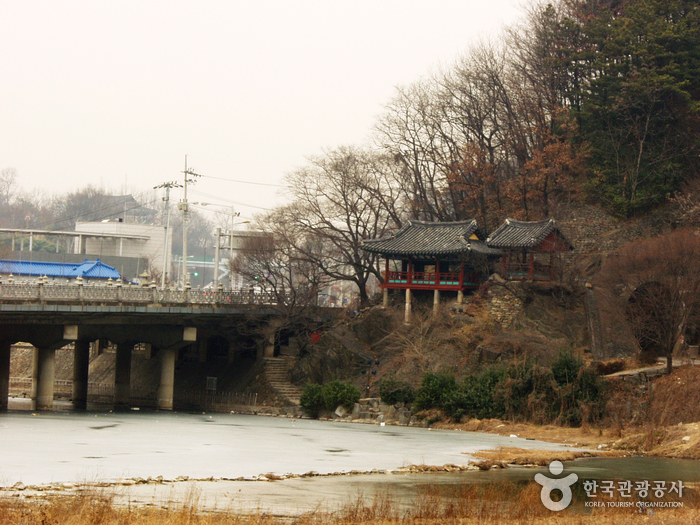


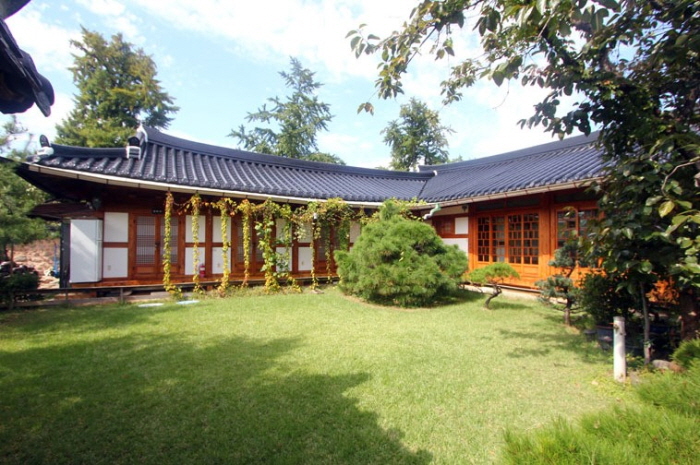
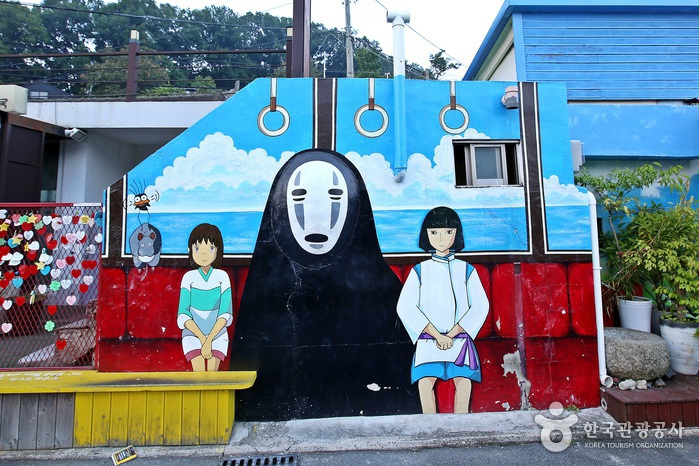
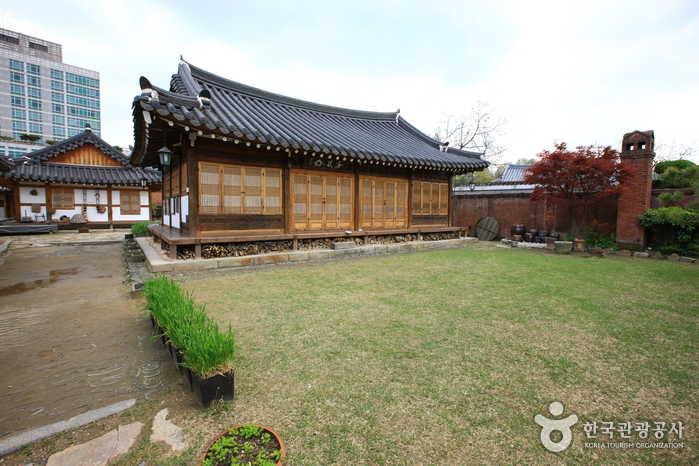
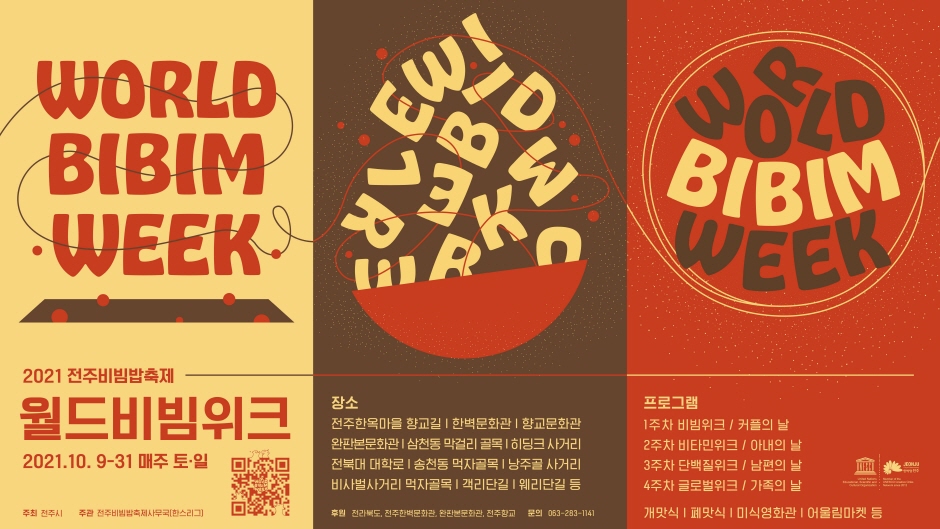
 Français
Français
 한국어
한국어 English
English 日本語
日本語 中文(简体)
中文(简体) Deutsch
Deutsch Español
Español Русский
Русский